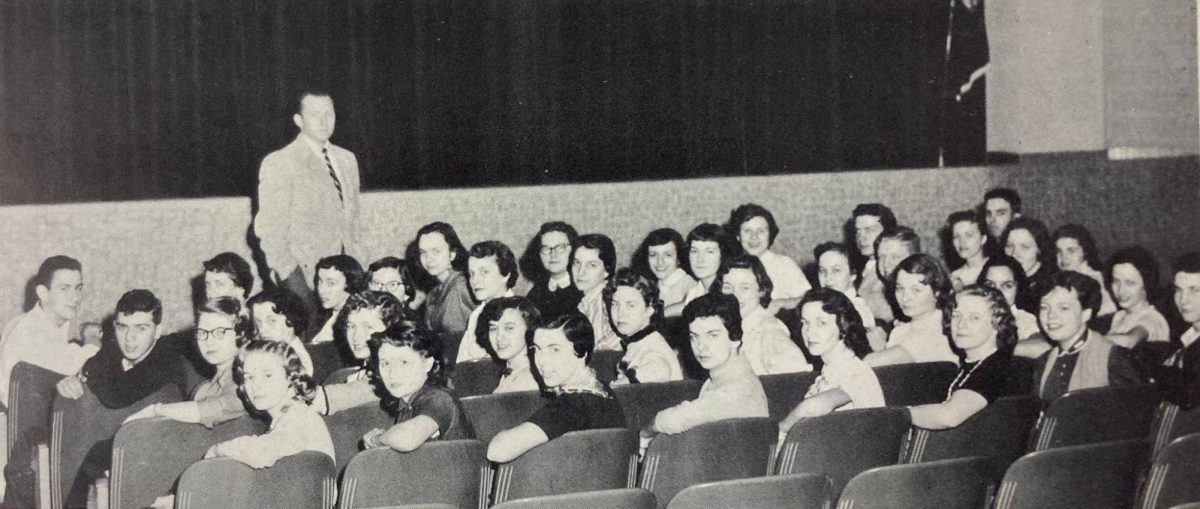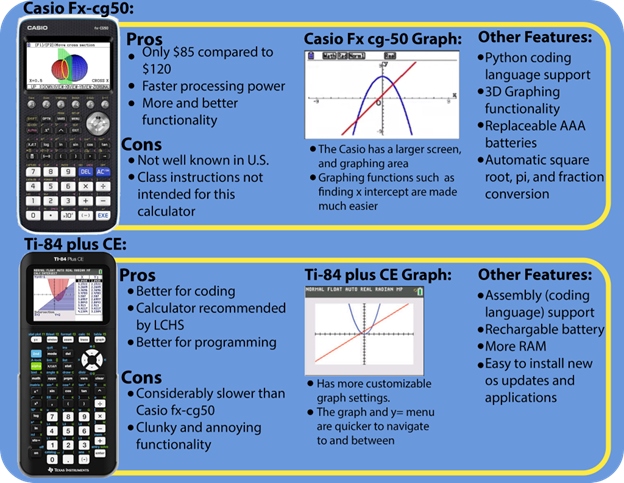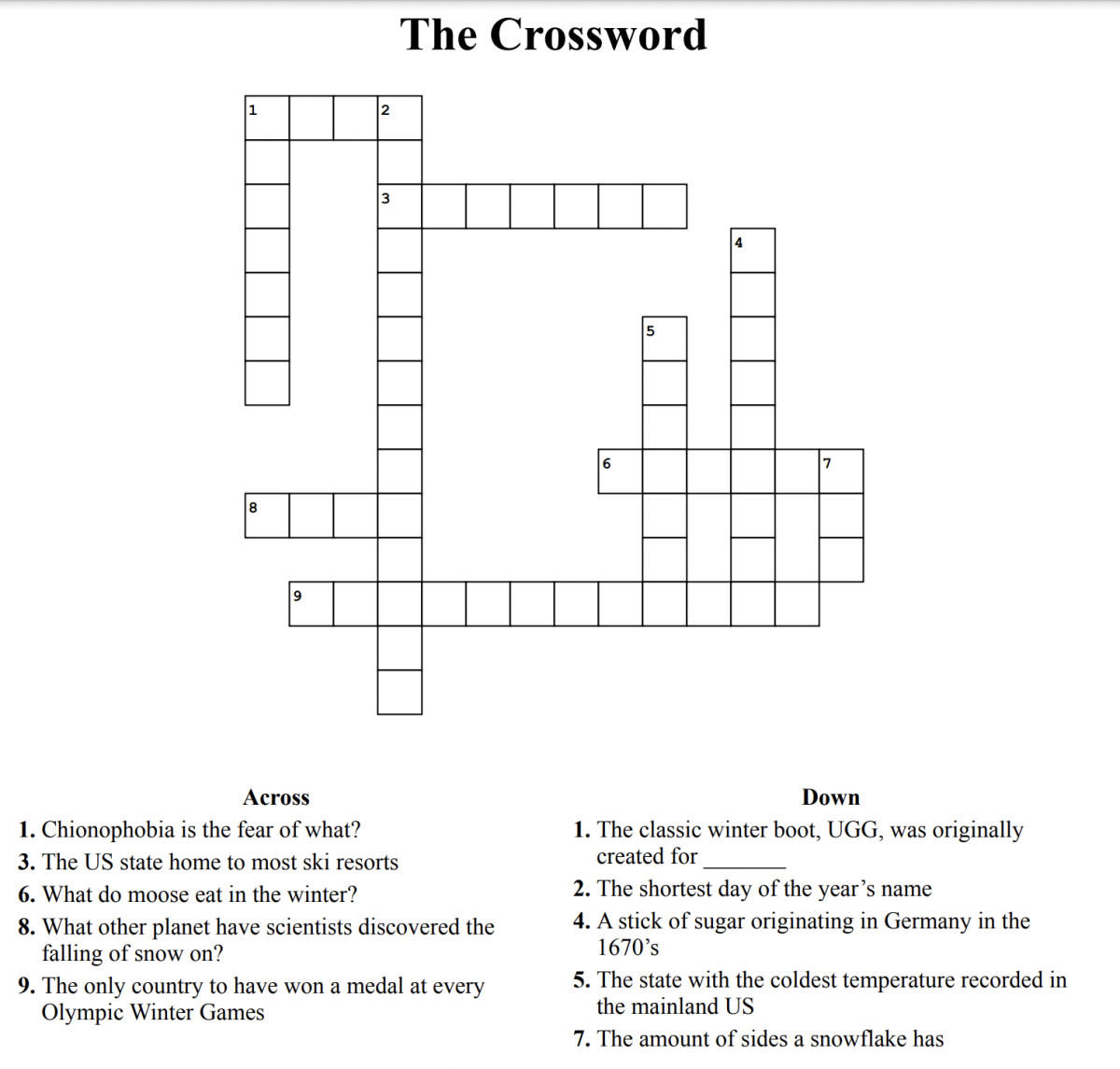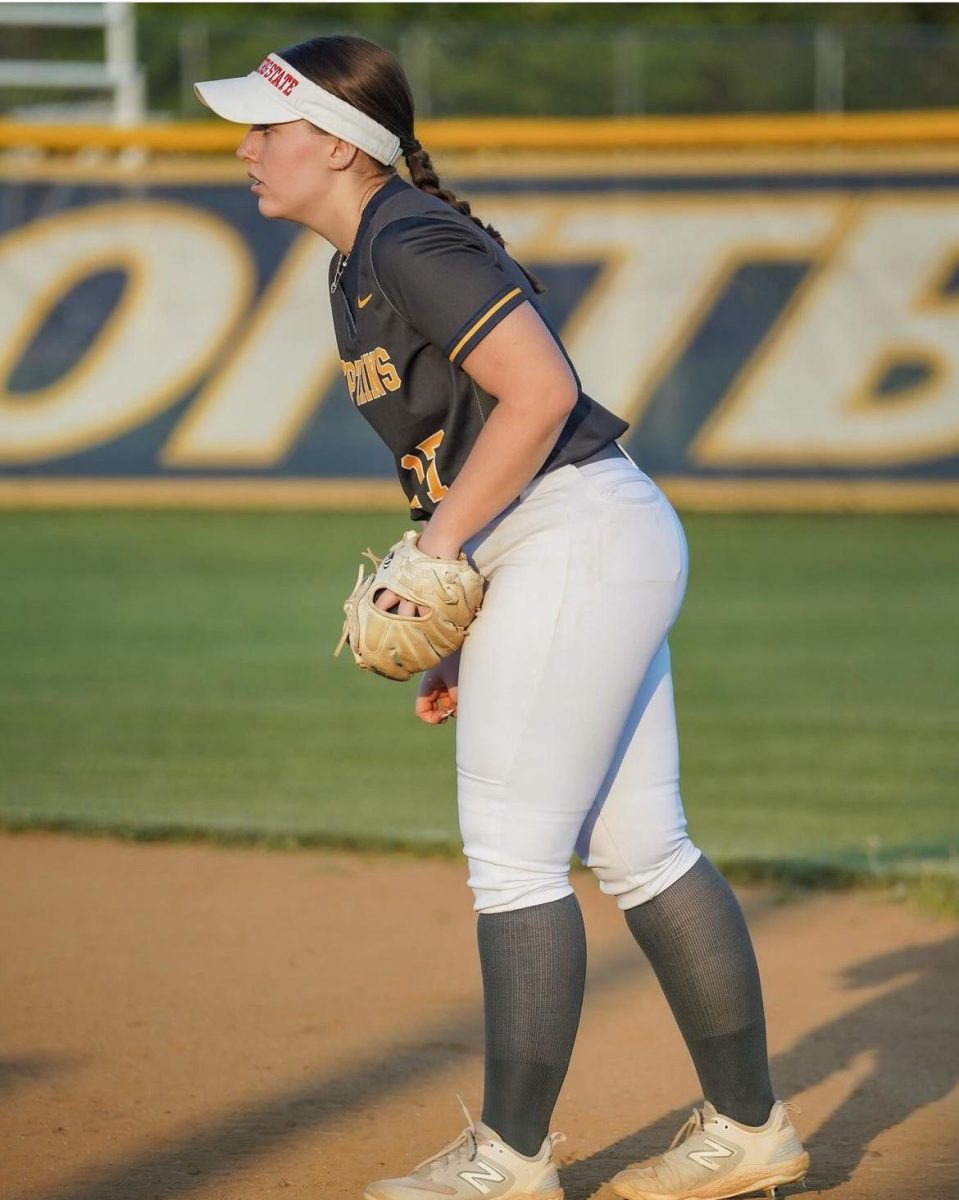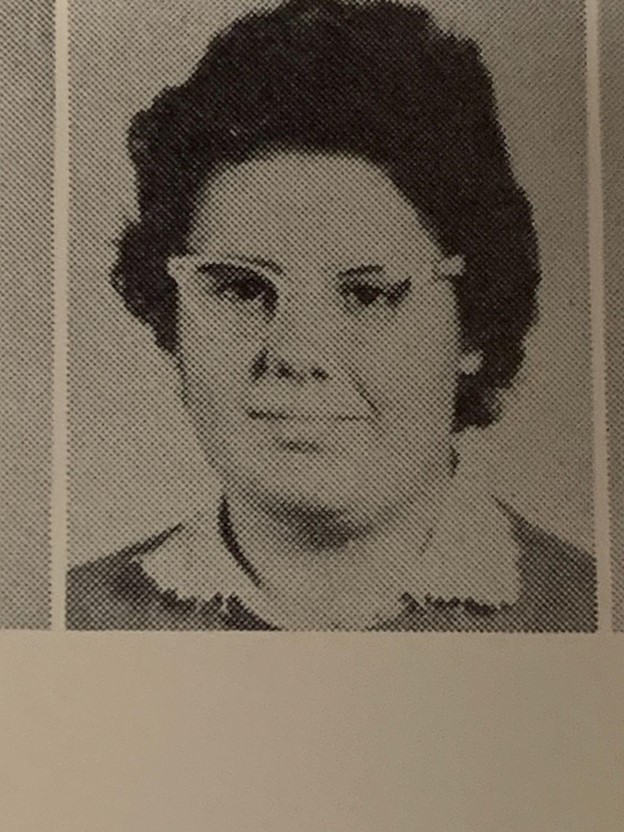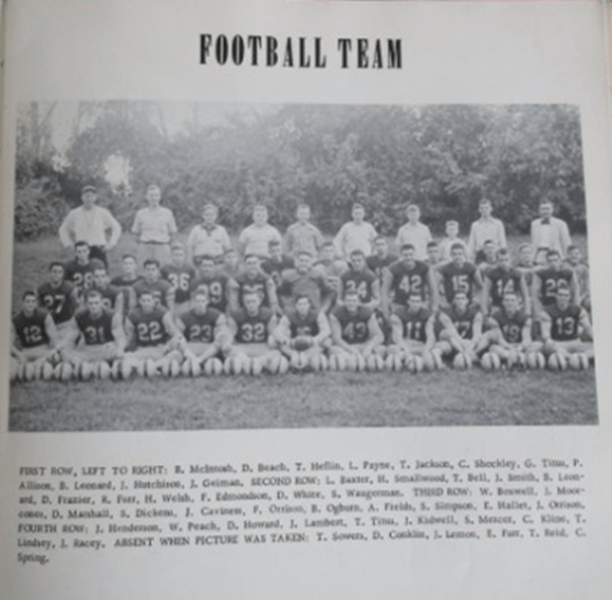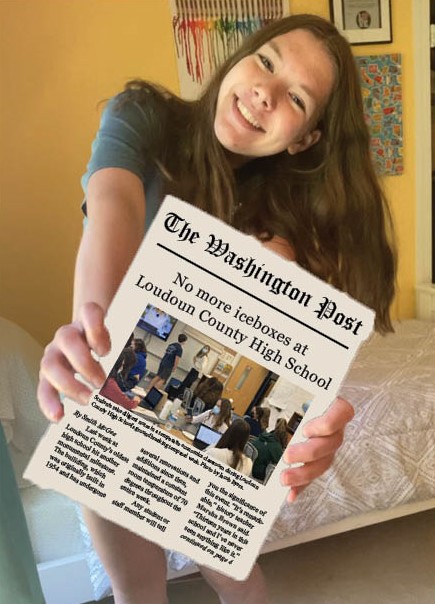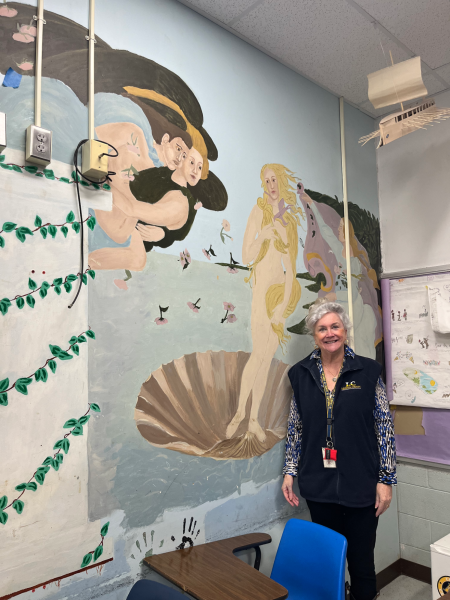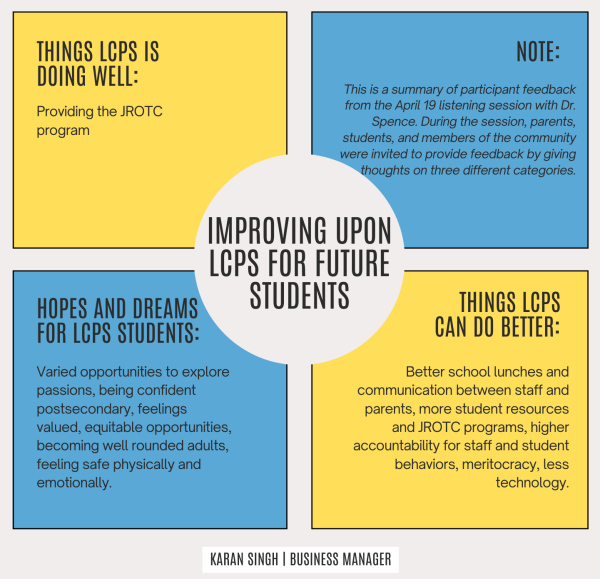Where Does Our Recycling Go?
A deep dive into how our county and school system deal with waste management
Recycling: how to do it, the benefits and negatives, how to raise awareness and increase participation.
Above us, a complicated network of national, state, local and school specific goals, regulations, and programs dictate the way our waste is dealt with everyday, and understanding these systems and how they work with each other can help everyone to participate more effectively in recycling.
Loudoun County
The planning for how the county manages waste is started at the state level, where submission of waste management plans created by a coalition of representatives of Loudoun’s incorporated towns, individuals invited to participate, and the county government is created for a 20 year time frame and amended every five years. This plan is approved by the County Board of Supervisors and then the Virginia Department of Environmental Quality.
In accordance with the planning of waste management the county then provides services for the public to manage trash, as well as requirements for how towns must manage residential and commercial waste.
“There’s a broad group of agencies and organizations that are bound by state, federal, and county level laws for how things are supposed to be done,” explained Tony Hayes of the Loudoun County Department of General Services Waste Management Division. “Then each jurisdiction handles it however they come up with different programs and services to make it happen.”
While all curbside pick-up services are handled by individuals, towns, or HOAs, Loudoun County offers a landfill called the Loudoun County Solid Waste Management Facility located in Leesburg, where residents and businesses can bring their solid waste.
Hayes added, “At the solid waste management facility, there are our recycling programs for scrap metal, yard waste, propane tanks, tires, motor oil, antifreeze, and car batteries.”
Individuals have access to these programs too, with a variety of fees associated which can be specifically researched on the facility’s website.
The county’s work regarding waste management also includes disposal operations, designing and permitting around waste management, and development of landfill disposal cells.
The county also manages eight recycling collection centers located throughout the county and contracts with a solid waste management service to provide collection of recyclable materials and their eventual recycling.
After sorting these materials are marketed for sale, and recycled by privately run facilities.
Within our county’s plan for waste management are specific objectives to “achieve or exceed” Virginia’s mandated recycling rates, an aspect of the job of waste management Loudoun County takes seriously as Hayes highlights the importance of recycling.
“Recycling conserves natural resources, reduces pollution, it conserves landfill space,” Hayes said, highlighting the simple yet impactful effects of recycling.
Loudoun County Public Schools
While Loudoun County handles larger plans for waste management, Loudoun County Public Schools have their own methods, goals, and programs in place for waste management.
The process begins in the Department of Support Services, which develops and implements Loudoun County Schools’ waste management programs.
Loudoun County Public Schools contracts with Waste Management Inc., whose two-stream (trash and recycling) facility is located in Sterling. That is where the two types of waste we produce, put into the green or blue dumpster outside of every school, is sorted.
From there the end processing location for recyclables varies day to day, as Waste Management, Inc. sends it to be recycled at a variety of different facilities.
“Some recyclable materials have a value and can be sold, while other recyclable materials cost more to transport than they are worth,” said William Wohead, Director of Facilities Operations for Loudoun County Public Schools.
Our school system pays the contracted transfer facility a “market rate” for the mixed recyclables delivered to the transfer facility, with the typical cost varying from $85 to $150 per ton. If the mixed recyclables arrive at the transfer facility with over 10% of the load containing non-recyclable materials, then the entire load is rejected to the landfill and our school system pays an additional fee of $150 per ton for the transport and disposal at the landfill. To minimize these fees, our county’s recycling collection driver will inspect and reject the recycling dumpster at the school itself if it appears there are contaminants in the dumpster. This then will be rescheduled for pickup by Refuse Collection and taken to a landfill.
This raises an important concern, and what Wohead describes as an important difficulty in recycling more materials.
“The volume of recyclable materials collected each day in the school is directly related to how hard the students and staff work to properly sort the recyclable materials separated from the waste stream,” Wohead said, adding, “We frequently have problems in the schools with trash or contaminated recyclable materials being placed in recycling containers.”
Due to health regulations, custodians, who empty the waste containers (trash and recyclables) everyday cannot sort through the waste themselves. When custodians see non-recyclables in a smaller recycling container, they will empty them into the trash dumpster, rather than recycling.
This means it is entirely up to the students and staff how much of the recyclable waste generated actually makes it to be recycled.
Despite this, our county schools typically recycle about 4,000,000 pounds of recyclable materials each year. However, when compared to the amount of pounds of trash disposed of each year, which is 18,000,000 pounds, we only recycle .222 percent of the waste we produce.
This is also not all created in the schools alone, as the county also prioritizes recycling in their construction, bus, and administration aspects, contracting with specialized vendors to recycle various metals, carpeting, EPDM roofing, electronics, wet cell batteries, refrigerants, oils, tires, concrete and asphalt.
If we had stronger recycling programs in our school, Wohead estimated, “A conservative number would be at least an additional 4,000,000 pounds per year,” of additional waste recycled.
Wohead stressed, “LCPS provides a full recycling program at every school, but the students and staff have to choose to make a difference by actually using it. We can’t force people to recycle correctly and unfortunately, we see a lot of variations between individual schools as student leaders come and go over the years.” He also emphasized the importance of recycling, “Recycling benefits future generations by preserving our natural resources while decreasing pollution.”
The official list of recyclables and non-recyclables for Loudoun County, student knowledge of information, and understanding of its importance in impactful recycling practices is vital to the increase in recycling of waste created by our school district.


Editor-in-chief Liberty Harrison is a senior at LCHS. This is her third year working on the newspaper staff. She would like to one day be an investigative...



